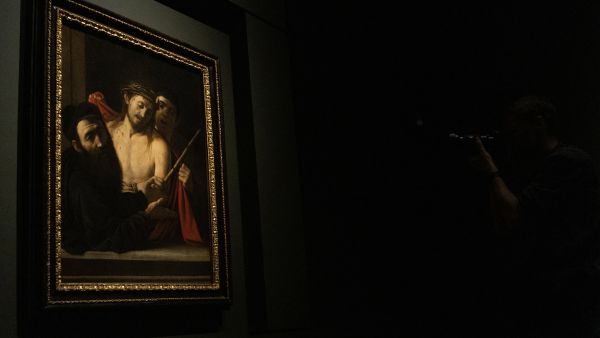ALBAWABA - The Prado Museum in Madrid has unveiled a Caravaggio painting that was once thought to be lost and auctioned off after it was assumed to be by an unknown artist, as reported by Reuters, in what the museum describes as one of the most significant finds in the history of art.
The artwork by the Italian master titled "Ecce Homo" (Behold the Man), which was first credited to an unknown Spanish painter, was slated to be auctioned off in Spain for barely any of what it was actually worth at only $1,800, according to Al Jazeera, three years ago.
Just before Caravaggio's death, in 1605–1609, he produced the painting, which has been missing from sight since the 19th century, depicting a suffering Jesus Christ wearing a head crown of thorns with the "chiaroscuro" technique he mastered that brings bring his subjects to life via lighting the figure. The artwork is believed to have formerly belonged to King Philip IV of Spain.
Caravaggio, who passed away in 1610 at the age of 38, was famous for his skilful use of light and shadow to create a profound sense of a mental reality in his often-brutal portrayals, with Art historians characterizing his work as the inception of contemporary painting.
David Garcia Cueto, head of the department of pre-1800 Italian and French painting at Madrid's El Prado Museum, stated to reporters that “We can now fully enjoy all the nuances, all the subtleties, the enormous beauty that Caravaggio expresses through his version of the Ecce Homo.”
The artwork's new proprietor, a global art collector located in Spain, has signed an agreement with the museum to maintain the piece on display until October. However, since the owner plans to exhibit it permanently, Reuters adds, this agreement may be prolonged.








